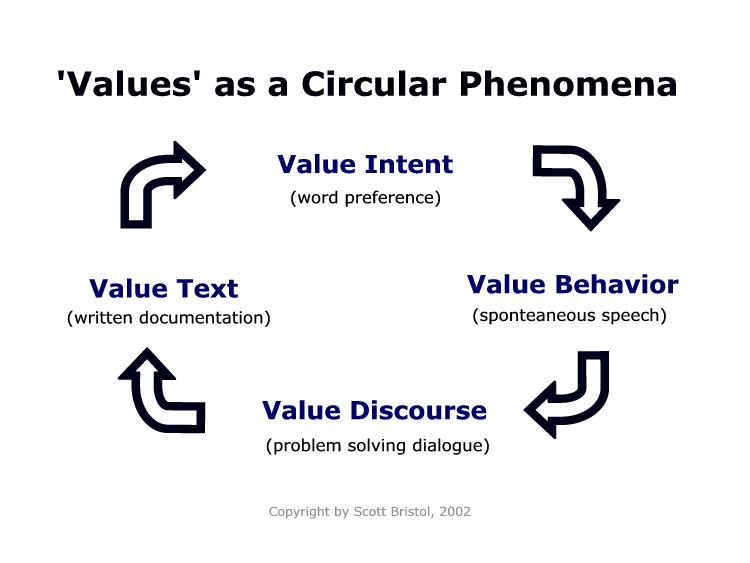
Scott Bristol's 'Values at Hand'.
Summary. 'Values and language' present a fundamental systems archetype. Alone this archetype represents a closed system. Change ultimately involves the expansion or contraction of the values used to populate this system and address given phenomena.
Circular phenomena generate self-reinforcing systems that tend toward stability and resist change.
Peter Senge's fifth and most important discipline is 'systems thinking' which was built on Jay Forrester's work in computer modeling of systems . Student's of 'systems thinking' will recognize the circular mapping below as a 'reinforcing feedback system' or as Robert Merton called it, a 'self-fulfilling prophecy' (Senge, 1990, p.80).
As such 'values and language' present a fundamental systems archetype. Through opportunity and choice we build a dialogic sense of 'self'. 'Self' as such is a continuous process involving the dialectic between our private internal voice and our public social voice as manifested both consciously and unconsciously in our words and actions.
Using the Bands of Cognition table we can identify how the four different levels of value cognition: intent, behavior, discourse, and text reinforce each other in a circular pattern.

'Self' as a linguistic process acts like this:
This circular process when it works well creates a 'values alignment' which involves:
To the degree that this process addresses the problematic phenomena in a way that is acceptable it's called 'professional', 'competent', or 'effective'. But, to that degree different groups of people define 'acceptable' according different values the need for change is immanent.
"Some problematic situations are situations of conflict among values... In such cases, competent practitioners must not only solve technical problems by selecting the means appropriate to clear and self-consistent ends; they must also reconcile, integrate, or choose among conflicting appreciations of a situation so as to construct a coherent problem worth solving... And in situations of value conflict, there are no clear and self-consistent ends to guide the technical selection of means' (Schön, 1987,p5-6).
In today's social and business world different 'relationship orientations' by their very nature represent value conflicts.
Three elements of change involve:
Copyright by Scott Bristol, 2002